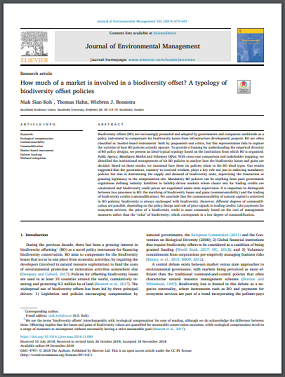
Biodiversity offsets (BO) are increasingly promoted and adopted by governments and companies worldwide as a policy instrument to compensate for biodiversity losses from infrastructure development projects. To provide a framing for understanding the empirical diversity of BO policy designs, we present an ideal-typical typology based on the institutions from which BO is organised: Public Agency, Mandatory Market and Voluntary Offset. With cross-case comparison and stakeholder mapping, we identified the institutional arrangements of six BO policies to analyse how the biodiversity losses and gains are decided. Based on these results, we examined how these six policies relate to the BO ideal types. Our results suggested that the government, contrary to received wisdom, plays a key role not just in enforcing mandatory policies but also in determining the supply and demand of biodiversity units, supervising the transaction or granting legitimacy to the compensation site.












